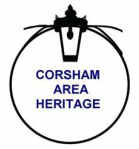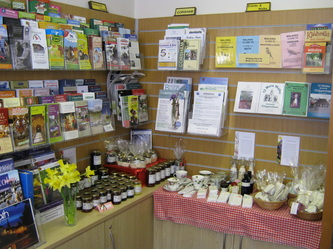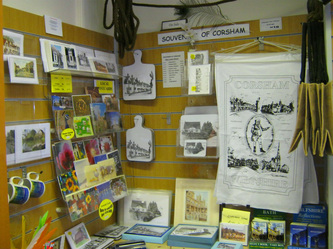What to see and do in the Corsham area
With Royal Saxon origins, Corsham features the unique 1668 schoolroom and Almshouses, Corsham Court (based on a 1582 Elizabethan manor house), and the High Street consisting mostly of properties from the 16th, 17th, and 18th centuries where peacocks wander freely.
The town owes its prosperity to the wool trade and quarrying of golden Bath stone, brought to life in the town's heritage centre.
Nearby is the village of Box from where stone was quarried from the 8th century. The quarries became the most productive in the world after massive deposits of Bath stone were discovered when the tunnel for the Great Western Railway was completed in 1841 by Isambard Kingdom Brunel. Some of his first timid travellers left the train before it entered the long tunnel and rejoined it at the other end!
The town owes its prosperity to the wool trade and quarrying of golden Bath stone, brought to life in the town's heritage centre.
Nearby is the village of Box from where stone was quarried from the 8th century. The quarries became the most productive in the world after massive deposits of Bath stone were discovered when the tunnel for the Great Western Railway was completed in 1841 by Isambard Kingdom Brunel. Some of his first timid travellers left the train before it entered the long tunnel and rejoined it at the other end!
The Hungerford Almshouses, Corsham
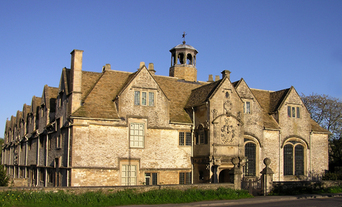
An attractive and unique complex of 17th Century Almshouses, Schoolroom, Warden's House and Stables. Schoolroom with original 17th Century furnishings and an Exhibition Room.
Virtually unchanged in 350 years, the buildings retain most of their original features and represent a fine example of 17th Century social provision. The Arms above the entrance are of its foundress, Lady Margaret Hungerford, who with her husband Sir Edward Hungerford, Commander of Cromwell's forces in Wiltshire during the English Civil War, lived in Corsham House (now Corsham Court) and there is a strong historical and interesting link between the two sites.
Admission: £3.00 Adults (£2.50 concessions). 50p Children. Opening hours:
April to September (Tuesdays and Wednesdays 11.00 am - 4.00 pm / Fridays and Saturdays 1.30 pm - 4.00pm)
October, November, February and March (Saturdays 1.00pm - 3.00pm)
Closed during December and January.
Pound Pill, Corsham.
Tel: 01249 713486
www.corshamalmshouses.org.uk
Virtually unchanged in 350 years, the buildings retain most of their original features and represent a fine example of 17th Century social provision. The Arms above the entrance are of its foundress, Lady Margaret Hungerford, who with her husband Sir Edward Hungerford, Commander of Cromwell's forces in Wiltshire during the English Civil War, lived in Corsham House (now Corsham Court) and there is a strong historical and interesting link between the two sites.
Admission: £3.00 Adults (£2.50 concessions). 50p Children. Opening hours:
April to September (Tuesdays and Wednesdays 11.00 am - 4.00 pm / Fridays and Saturdays 1.30 pm - 4.00pm)
October, November, February and March (Saturdays 1.00pm - 3.00pm)
Closed during December and January.
Pound Pill, Corsham.
Tel: 01249 713486
www.corshamalmshouses.org.uk
Corsham Area Heritage & Information Centre
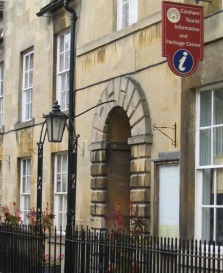
Arnold House
31 High Street
Corsham
Wiltshire SN13 0EZ
Tel: 01249 714660
Email: [email protected]
The Corsham Area Heritage & Information Centre provides a wide range of information, gifts, accommodation booking and travel services including National Express tickets. The Centre has recently undergone a major refurbishment and now has disabled access.
Opening hours:
10.00am - 2.00pm Monday to Saturday
A programme of changing exhibitions relating to aspects of local history runs throughout the year. Admission is free.
THE HERITAGE ROOMS ARE CURRENTLY CLOSED FOR REFURBISHMENT
A programme of changing exhibitions relating to aspects of local history runs throughout the year. Admission is free.
THE HERITAGE ROOMS ARE CURRENTLY CLOSED FOR REFURBISHMENT
The Wool Room
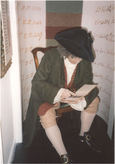
Set in the downstairs rooms of a clothier’s mediaeval house, this tells the tale of Corsham’s rise in prosperity, based on the spinning of wool for weaving cloth. There are interactive displays suitable for children. By the way, the 17th Century clothier was called William Arnold and he became a major landowner and one of the wealthiest people in Corsham.
The Heritage Room
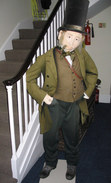
Corsham’s second economic boom happened after the engineer Isambard Kingdom Brunel completed the Box Tunnel for the Great Western Railway in 1841. About 2 miles long, the excavation revealed large deposits of limestone (“Bath Stone”) under Box Hill and a vast expansion in underground quarrying took place. These workings were taken over by the Government at the outbreak of WW2 for secure underground ammunition storage as well as underground engineering factories, including an aircraft engine assembly line! In 1956 the Ministry of Defence developed it into a Regional Seat of Government in anticipation of a nuclear war. Home for 4000 personnel it was decommissioned in 1991 and declassified in 2004.
